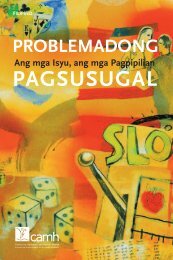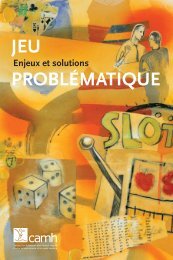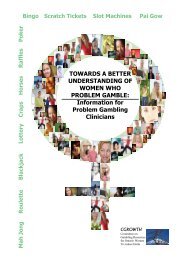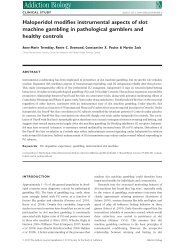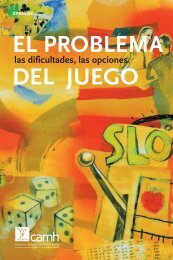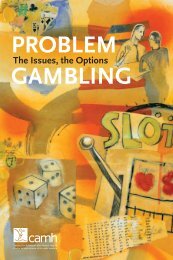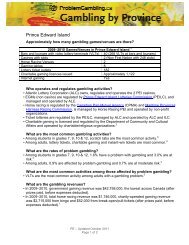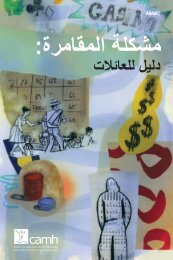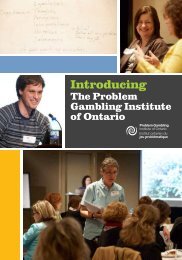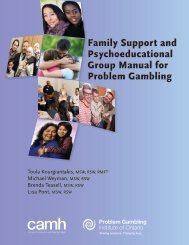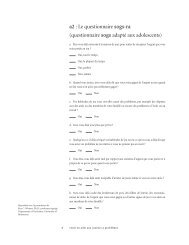Youth Making Choices: Gambling Prevention Program
Youth Making Choices: Gambling Prevention Program
Youth Making Choices: Gambling Prevention Program
You also want an ePaper? Increase the reach of your titles
YUMPU automatically turns print PDFs into web optimized ePapers that Google loves.
Unit 10: Where Do You Go From Here?Appendix BTeacher Resource 2 p. 1Biopsychosocial-Cultural-Spiritual Model(The Inner and Outer Influences of Risk)The Biopsychosocial-cultural-spiritual (BPSCS) model is an approach thatassumes that biological (medical), psychological (which entails thoughts,emotions and behaviours) and social, cultural and spiritual belief systems arefactors that play a significant role in human functioning in the context of diseaseor illness. The model assumes that mental health problems are hardly ever limitedto just one domain of human experience (say, just a “mental” problem). Instead,most mental health problems are influenced by multiple domains of humanexperience, and have biological, psychological, social, cultural and spiritualimpacts. The model provides a framework for understanding what causes andsustains addictive behaviours and experiences and provides direction in framingboth clinical and prevention practice.In a philosophical sense, the BPSCS model states that the workings of the bodycan affect the mind, and the workings of the mind can affect the body, and thatoutside influences can affect both. For example, research in the field of addictionhas made major strides in recent years in demonstrating the contributions ofinternal and external stressors in the initiation and maintenance of substance usedisorders. While gambling itself can be a stressful activity, pathological gamblersoften report gambling in order to escape life stress. Research on the relationshipbetween pathological gambling and stress is in its infancy.<strong>Making</strong> Healthy Lifestyle <strong>Choices</strong> That Involve RiskEverything we do involves calculation and risk taking. Looking at benefits versus risks issomething people do to various degrees all the time. It is important to take into considerationthe various factors from the BPSCS model when understanding the decision making processof someone who is addicted to gaming, gambling or substances. For instance someone withADHD (biological) may gravitate to using substances and gambling behaviours to cope with thecondition (psychological). This in turn results in the person dropping out of school (social), whichbrings shame to the family (cultural).Crossing a street is a risk, although a low one in terms of something bad happening. Havingunprotected sex can be riskier, and drinking and driving even more of a risk. Some risks mayhave positive outcomes, such as wise stock investments. There are varying degrees of risk thatmay put someone in danger or, alternately, may result in positive rewards.A “calculated risk” is one that has been considered and weighed for the potential costs andbenefits of both positive and negative outcomes. Many youth take risks based on “hunches.”A hunch is a guess or a feeling not based on known facts or else based on intuition or animpression that something might be the case.<strong>Youth</strong> <strong>Making</strong> <strong>Choices</strong>: <strong>Gambling</strong> <strong>Prevention</strong> <strong>Program</strong>www.Problem<strong>Gambling</strong>.ca10.11




